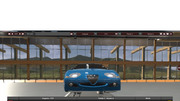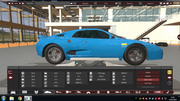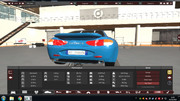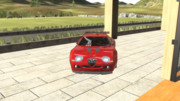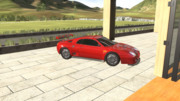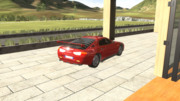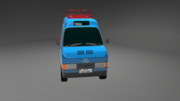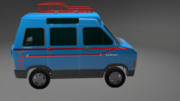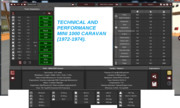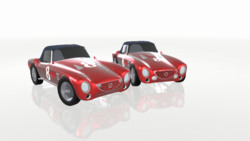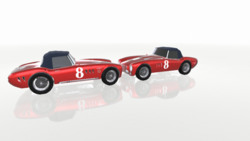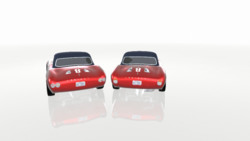The Agrigentum model (Project 907) was a sedan with four premium seats produced by the Italian automaker F.S.A. from 1997 to 2005 and was also marketed in the Sportwagon version (2001-2005).
The Agrigentum was a car characterized by a particularly harmonious and at the same time aggressive line, bearing the signature of E. Bagli. The car had a soft line made up of taut lines and wide radius connections.
The interiors also brought the same stylistic conception of the exterior: very soft lines characterize the entire dashboard and two large circular elements constituted the dashboard in front of the pilot. Three small circular instruments on the central plank follow the tradition of the house. The steering wheel, unpublished, incorporates the airbag and, optionally, could have a wooden crown.
The Agrigentum had independent suspensions on all four wheels, McPherson at the front and Double Wishbone at the rear, the 5-speed automatic transmission with differential geared LSD, the disc brakes and the Hydraulic Power steering with TC + ABS.
The engines available were the 4-cylinder naturally aspirated 1998cc with Multi point EFI that produced 165 hp and allowed to reach 220 Km and accelerate from 0-100 to 9.19s.
There was also a motorized version with a 2.5 liter V6 but which was built in only 3000 units only at the request of some US retailers.
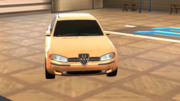
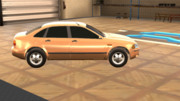
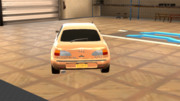
In 2001 the facelift of Agrigentum was presented which, keeping the mechanics unchanged, had new headlights both at the front and rear, new infotainment services and a new two-zone automatic climate control system.
The 1998cc engine, thanks to the new direct injection system, delivered 172 hp which allowed it to reach 222 km h and accelerate from 0-100 to 9.06s.
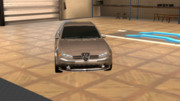
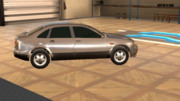
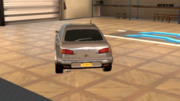
But the real novelty of 2001 was the new Sport Wagon version, a crossover halfway between Station Wagon and SUV that, thanks to the 187 hp of the 2492cc V6 direct injection engine, reached a speed of 225 km and accelerated from 0-100 to 8.70 s
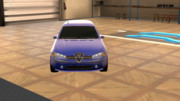
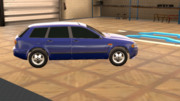
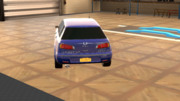
coming soon the versions of Agrigentum to the Tourism races championship.
A refined mechanical elaboration characterizes the Agrigentum D2 Superturismo, in harmony with the regulation, which allows interventions on the engine, transmission and aerodynamics.
The engine is a two-liter Twin Spark 16 valve. Base and headboard are derived from the 2.0 series. Instead, pistons and connecting rods that have been specifically designed for competitions, as well as the dry sump lubrication circuit, change. The electronic ignition and injection system is managed by a specific control unit.
In collaboration with the Hunday Research Center, the intake and exhaust manifolds have been modified to have maximum performance between 7000 and 8500 rpm, the maximum rotation limit allowed by the technical regulation, which requires a specific limiter.
The position of the engine also changes, positioned lower down and back towards the rear of the car, to ensure better weight distribution and reduce inertia without losing traction.
The transmission, designed in collaboration with X-TRAC, is a six-speed transmission with front clutches. The differential is self-locking, with slats with viscous joint in parallel.
Despite the processing, the Agrigentum D2 Superturismo maintains a remarkable resemblance to the standard model. In addition to the original arrangement of the mechanical parts, the regulation requires, in fact, to maintain the same suspension pattern, allowing only the use of shock absorbers and springs designed for competitions.
The braking system has been enhanced with the adoption of self-ventilating discs.
Finally, the Agrigentum D2 Superturismo has a rubber fuel tank and a tubular cage roll-bar, with the dual function of safety and stiffening of the body.
The interventions on the bodywork are those allowed by the regulation: a front lips and a rear wing, with measurements set by the FIA.
Agrigentum - 2000 D2.car (52.8 KB)
In 1970 the model “Special Tourism” was presented, a GT berlinetta born from the joint venture between the F.S.A. and Renoir, in France the car was sold under the name Vainquer and had different headlights, which provided the mechanical base and engine tuning respectively.




Thank you for your cooperation CMT, owner of Renoir.
In 1947 the F.S.A. acquired, on political pressures that wanted to safeguard the workers, the Castelli Auto a small factory of racing cars and Gran Turismo, whose owner had died without heirs, and decided to make it his division to build the Luxury GTs.
Moreover from 1947 to 1961 Castelli Auto acted as a racing department of the F.S.A. in the World Championship Builders.
The first car designed in 1946 but sold since 1947 was the 2000 Sport a car suitable for racing in the class of prototypes up to 2.0 Liters of displacement.
The model marked a turning point with the previous tradition, namely that of supercharged engines. The suction was now natural, without compressors upstream of the power supply system, with overhead camshafts governing the two valves per cylinder. It fitted three Weber type carburettors and had single ignition with Migneti Morelli brand distributor. The engine displacement was 1988 cm³ and had a power of 141 hp.
The chassis consisted of longitudinal, transverse members and the bodywork was the work of Medirdo Fontuzzi, and was an aluminum two-seater speadster. The brakes were drum-type on wheels with hydraulic control. The suspensions were with Houdaille hydraulic shock absorbers and stabilizer bar. The front ones were double wishbones, while the back ones were crossbows. The gearbox was four-speed, while the steering was a worm gear.
14 copies were produced from 1947 to 1952 which won countless victories in their displacement class as well as thirty absolute victories.
1 Like
Also in 1947, the “1500 GT” model was presented, a berlinetta with four luxurious seats.
The engine was a reduced and weakened version, thanks to the use of standard carburettors, shortened exhausts and cams with thicker profiles, of the six-cylinder of the 2000 Sport which delivered 70 horsepower.
The bodywork designed by Taring recalled that of the 2000 sport but with the addition of handles and the contour of the headlights in chromed aluminum; furthermore the rough side grille, present in the bodywork of the 2000 sport, was replaced by three ventilation holes that followed the course of the side.
It was the first Castelli born explicitly as a road car, wanted by the new property F.S.A.
After a slow start the orders began to grow in fact the “1500 GT” was produced in 61 copies (5 in 1947, 9 in 1948, 25 in 1949 and 22 in 1950).
1 Like
The “Castelli 2000 GT” was presented to the public at the 1950 Turin Motor Show by Paninfarana, outwardly resembled the previous 1500 GT but differed in the doubling of the headlights, both front and rear, and for the air intake on the bonnet.
To get the 1988cc displacement, compared to the 1500 GT model, the stroke and bore of the 6-cylinder engine was increased which now supplied 100 HP. The dimensions of the chassis remained unchanged, compared to the 1500 GT, but the rear suspensions were revised taking inspiration from those, always solid axle leaf, used by Ferreri.
The interiors consisted of four luxurious leather seats and the presence of an FM radio.
The “Castelli 2000 GT”, which was destined for a few and was built semi-artisan in 80 units until 1954, made Castelli famous throughout the world as one of the car manufacturers producing the highest quality cars.
In 1953, with the start of the Constructor World Championship, Castelli decided to participate with the “2500 Sport” model in a two-seater roadster prototype. it was built in five specimens and had the chassis in common with the “2000 sport”, even if with widened fenders and visible side discharge, on which the new 6-cylinder engine was assembled in accordance with the regulations of the new championship. He participated in the races of the seasons 1953-1954, such as the Mille Miglia and the Supercortemaggiore Grand Prix of Monza but without obtaining significant results. The car was therefore shelved, to develop the new 300S.
The engine was the six-cylinder in-line engine with 2495 cm³. The cylinder bore was 84 mm while the stroke was 75 mm. It had a double overhead camshaft and three Waber 42 DCO3 carburettors were installed.
The brakes were hydraulically operated on four wheels. The front suspensions had triangular arms with Houdaille hydraulic shock absorbers and stabilizer bar. The rear ones with transverse leaf spring, Houdaille hydraulic shock absorbers and stabilizer bar. The body was aluminum.
n the mid-1950s, F.S.A., the owner of Castelli, smelled the rising luxury GT market that would be born along with the economic boom. He understood that Castelli had to invest in a totally new model in terms of setting, quantity and displacement.
The new car had to be of superior class and combine the typical sportiness of the Modenese brand with requirements of luxury and comfort, it had to allow long distances at high speed on the highway without tiring the driver and passengers. The passenger compartment therefore had to be comfortable and comfortable and roadholding had to be safe and affordable for all types of customers, without having to be skilled pilots. The interior fittings and finishes had to be of high quality so as not to disappoint the most demanding customers. The mechanics had to be reliable and durable as well as sporty.
All this had to be replicated in numerous specimens. The Maserati production before the 3500 GT was extremely reduced, with this model we wanted to go on to produce 2 cars a day. Important numbers if we consider that only 2-3 cars per month had been produced.
Furthermore the previous models all had a displacement of between 1.5 and 2.5 liters; now you had to aim higher, beyond 3 liters to adapt the performance to the increased dimensions of the machine.
From these premises the “3.500 GT” model was born, a berlinetta with four luxurious seats powered by a 3.485cc in-line six-cylinder DOHC engine that applied new technical solutions, at least for the Castelli road cars, such as the Semi trailing arm rear and hydraulic power steering.
The car was produced in 1,406 units from 1957 to 1961, that is to say, it took Castelli from a craft factory dimension to that of a semi-industrial factory.
1 Like
The 3700 GT model was presented at the 1962 Geneva Motor Show and the engine installed was a 3700cc 6-cylinder in-line engine with 223 hp of power. The chassis and bodywork were different from those of the 3500 GT, but the design of the bodywork (by Vegnale instead of Taring) was different.
It had a five-speed manual transmission as standard; in option you could have the automatic transmission (this to meet the tastes of American and English customers): the 3700 GT was one of the first Italian cars to be able to mount it; power steering was present, disc brakes on all four wheels completed the technical features.
The 3700 GT was produced from 1962 to 1966 in 591 units.
other photos with bodywork details
1 Like
The Tipo 60 was a racing car built by Castelli from 1959 to 1961.
It was among the best known competition cars of the early sixties, and was designed for endurance races such as the 24 Hours of Le Mans. It was a two-seater Coupe, with front engine and rear-wheel drive. The 16 units built were purchased by Italian and American customers. It is considered the maximum result achieved for racing cars with front engine.
The Roma Corse and Comoradi teams became famous for their victories with the Tipo 60, but, despite the fact that the model was faster than the competitors on the track, it was not reliable enough for frequent gearbox problems.
The engine was a four-cylinder naturally aspirated 2999 cm³ engine with two Weber 48 DC03 carburettors, which delivered a power to the crankshaft of 250 hp.
The distribution was four valves per cylinder with double overhead camshaft, the gearbox was five-speed manual and the suspensions were double transverse on both the front and rear axles and finally the brakes were disc, front, and drum , rear.
The model never won at Le Mans due to reliability problems, but prevailed in 1960 and 1961 at the 1000 km of the Nürburgring.
It was the last sports car built by Castelli because its racing department was integrated into the F.S.A. to design the 1300 GTO (see in the previous posts) which met the requirements of the new World Sportcar Championship regulation which, since 1962, involved the participation of GT cars built in at least 100 specimens.
1 Like
Castelli Berlina Lusso 4100.
In the early 1960s, the offer of high-performance sedans was reduced to a few models produced by Lanzia, Jaguor and Mercodes-Binz.
The optimism deriving from the strong economic recovery suggested a rapid development for the luxury car market, also confirmed by the sustained sales of Gran Turismo sports which saw the Italian houses Ferreri and Castelli excel.
Based on these forecasts and inspired by an idea of the sports journalist Gino Rancati, the management of Castelli, at the time hired by the FSA family, decided to start building a high-performance sedan and, absolutely new, with adequate characteristics techniques, thus giving life to the concept of “sports sedan” which, in the immediate future, would have had great success and success.
The car was presented at the Turin Motor Show in the autumn of 1962, receiving public favors. The elegant line, the large dimensions, the luxurious finishes, the avant-garde technical solutions and the remarkable performance of the Castelli BL 4100 made it a sudden object of desire for the wealthiest social class.
The success caught Castelli’s management unprepared, who had started the project as an image operation and, prudently, had set up the production line to build only one specimen per day.
Despite the high price of 6,230,000 lire, equal to the cost of 13 Faat 500, the members of the jet set willingly purchased the car. Among the politicians, Rainier of Monaco and the Aga Khan, who bought even two, and the secretary of the PCUS Leonid Brezhnev, to whom it was donated by the direction of the PCI, in 1968.
In addition to the business world, well represented by Raoul Gardini, he was particularly successful in the world of sport and entertainment. Numerous famous buyers, such as Nino Benvenuti, Nils Liedholm, Carlo Bergonzi, Sergio Leone, Marcello Mastroianni, Virna Lisi and Peter Ustinov, who never wanted to separate from his mink-colored specimen, personally leading him even in the last years of life.
From a technical point of view, the 4132cc V8 engine made entirely of aluminum and powered by a triple double-barrel carburettor, disc brakes on all four wheels and hydraulic power steering were at the forefront.
From an aesthetic point of view, the glass roof and the aluminum-plated wheels were noteworthy.
Due to a technical problem with the PC, I lost all the cars saved so I was forced to stop the F.S.A.
today I received the new PC I hope to resume posting soon.
Good night
The Castelli BL 4000 was a car produced and marketed by FIAT between 1970 and 1979. The internal design code of the car was BL2.
Equipped with an 8-cylinder V-fueled petrol engine, it had a displacement of 4 liters.
Its marketing ended after 8 years of production, and a total of 2,000 copies were manufactured, also considering the version with the injection engine, many sold in America given the low consumption, between 5 and 5.5 liters / Km, compared to rivals made in the USA.
the technical equipment included the adoption of rear wheel drive, the adoption of 4 disc brakes, the use of power steering, and finally the adoption of the 3-speed automatic transmission (supplied by Birg-Wirner).
On the BL 4000 first series, a dashboard with rectangular and aligned instruments was adopted, stylistically reminiscent of those of the American sedans of the time. On the second series it was replaced by a dashboard characterized by a more European design, circular instruments and refined finishes, as lacquered wood was used to garnish it. The interiors were characterized by the use of fine velvet or excellent quality leather to cover the upholstery. They were richly equipped with accessories such as air conditioning. The 4000 In version was equipped with an exclusive optional, since the controls for opening and closing the passenger door could be controlled independently by the driver of the car.
BL 4000
BL 4000 In












